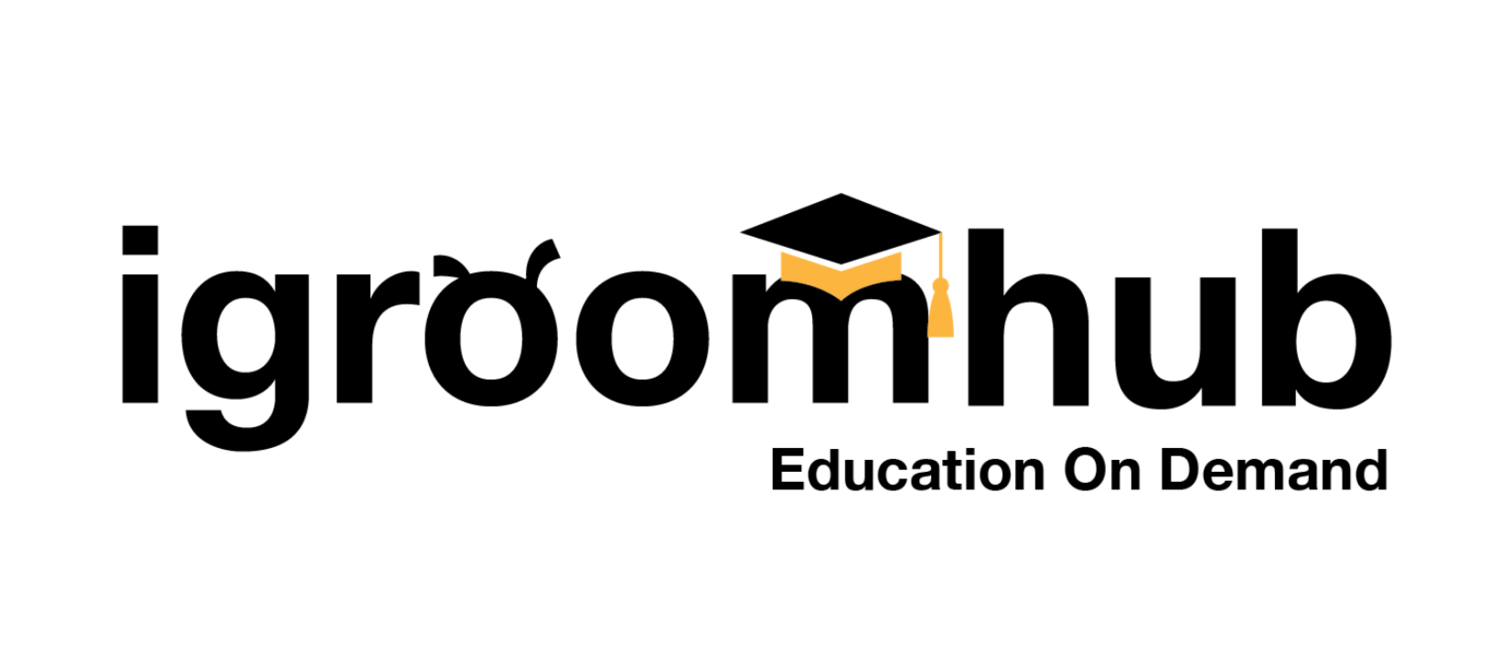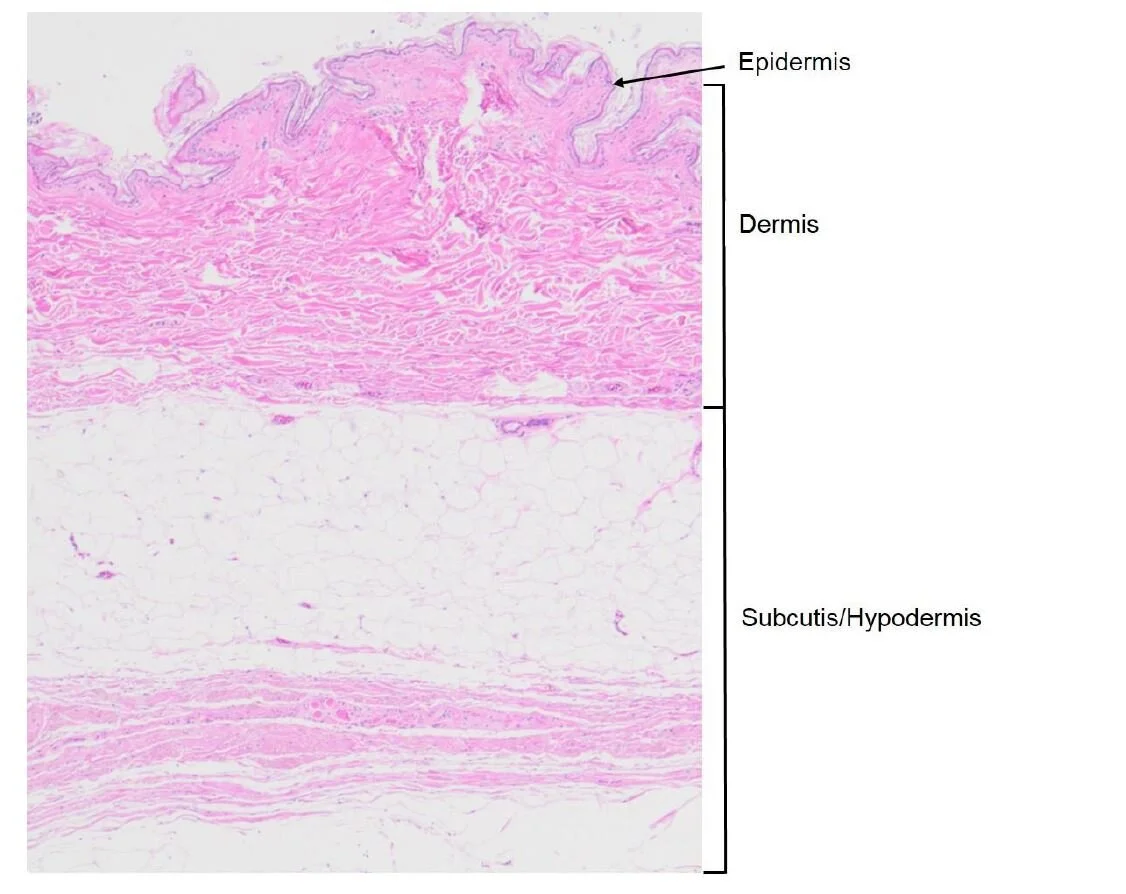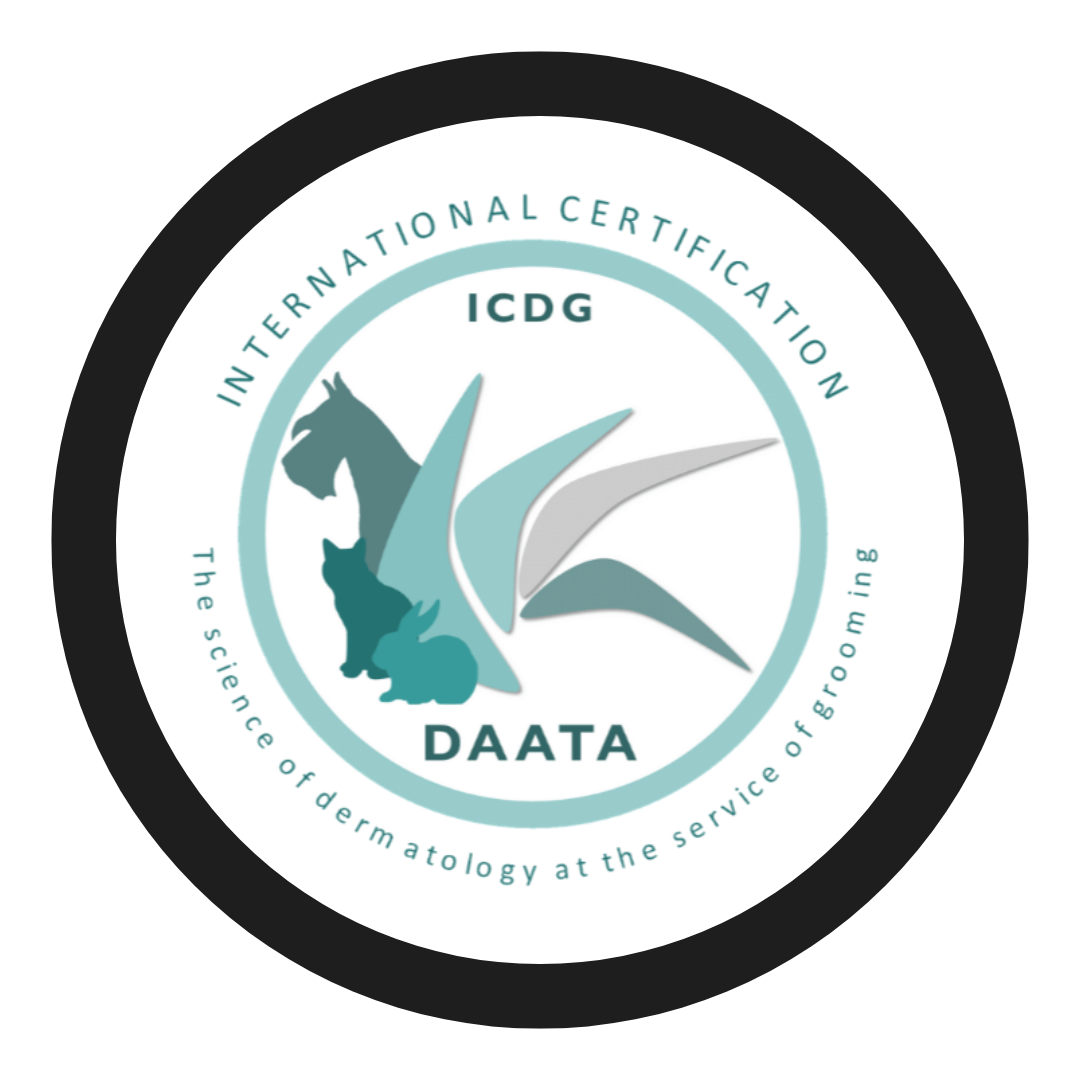
DAATA
05 The Dermis
THE DERMIS
The dermis supports the epidermis and nourishes it. It also contains and nourishes the epidermal appendages and represents the largest part of the skin. It consists of various cells resting in a matrix rich in proteins, carbohydrates and water. It is the nutritive reserve of the epidermis. Depending on the area, it is 10 to 40 times the thickness of the epidermis.
FUNCTIONS OF THE DERMIS
THE DERMIS IS VASCULARIZED
The dermis is also rich in blood vessels and nerves unlike the epidermis. The red blood cells carried by the blood vessels nourish the skin by providing essential nutrients, oxygen and eliminating waste. White blood cells seek and destroy invading microorganisms and fight infections.
Between the dermis and the epidermis is a membrane called dermal-epidermal junction, a complex set of proteins that ensures the anchoring and the strength of the skin. This membrane is very important, its deterioration can lead to serious consequences up to death.
IMPORTANT
Good vascularization of the dermis is an important element of the good health of the hair, its texture and its colour. When an element interferes with and reduces vascularity, the follicle no longer receives the proper volume of blood and therefore does not receive enough nutrients to form healthy hair. Poor vascularity leads to the growth of thinner, lighter, more woolly hair and sometimes alopecia.
FIGURE 10 SOURCE: LOCAL OR SUBDERMAL PLEXUS FLAPS
THE DERMIS CONTAINS FIBRES
The dermis also contains collagen fibres, proteins that form ropes and give the skin its tensile strength and durability. When the collagen fibres start to deteriorate (naturally with age, because it is damaged or due to illness), the skin loses strength and may even sag.
It also contains elastic fibres called elastin giving the skin its suppleness and elasticity. It is also a fibrous structural protein secreted by fibroblasts essentially during the growth period. When elastin fibres deteriorate, the skin loses its ability to come back into place and begins to wrinkle.
Thus, breeds whose fur is said to be highly resilient are breeds that produce a lot of elastin.
The hydration of the dermis is ensured by its richness in proteins and water. The latter is attracted in large quantities by carbohydrate molecules (or glycosaminoglycans).
When carbohydrate molecules are damaged, the dry skin becomes weaker and more prone to damage.
THE ARRECTOR MUSCLE
Also known as the horripilator muscle, the hair arrector muscle is a smooth muscle located at the base of each hair in most mammals (including humans). It extends from the base of the epidermal sheath of the hair to the epidermis. It participates in thermoregulation during the thrill (goose bumps). By contracting, it straightens the hair (phenomenon of piloerection).
This muscle plays an important role in the regulation of heat loss. When it contracts, it releases heat and increases the space between the surface of the hair and that of the skin, creating a kind of cushion of hot air. These muscles also play a role in social interactions, with raised hair being a defense behaviour.
All these elements surround the follicle to provide it with support and the necessary elasticity. However, it is important to understand that dermal tissues are flexible and that the position of the follicle can be affected by the mechanical manipulation of the hair.
THEREFORE, IT IS POSSIBLE TO CAUSE THE HAIR TO MAINTAIN A CERTAIN POSITION BY GROOMING IT IN A CERTAIN WAY. THE DAATA METHOD TAKES ITS FOUNDATIONS FROM SIMPLE PRINCIPLES. THE LATTER IS ONE OF THE PILLARS OF THE METHOD. IF YOU UNDERSTAND HOW YOU CAN ACT ON THE POSITIONING OF THE HAIR, THEN YOU HAVE THE POSSIBILITY OF GREATLY IMPROVING THE RESULTS OF YOUR GROOMING WHILE USING PHYSIOLOGICAL AND MINIMALLY INVASIVE METHODS.
WATCH NATHALIE’S LECTURE - THE DERMIS, THE EPIDERMIS AND MORE








